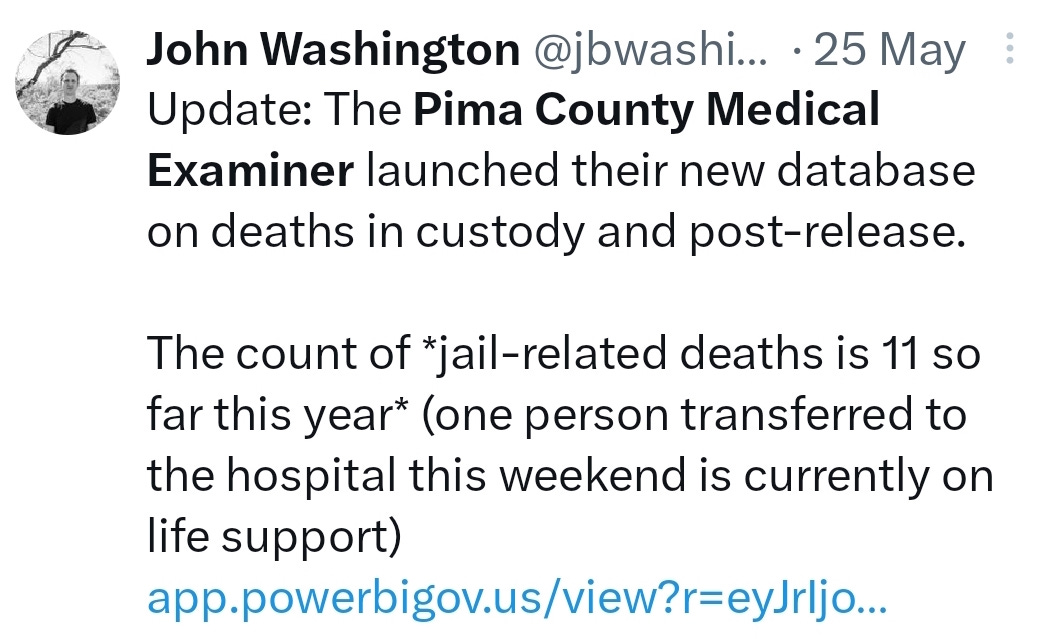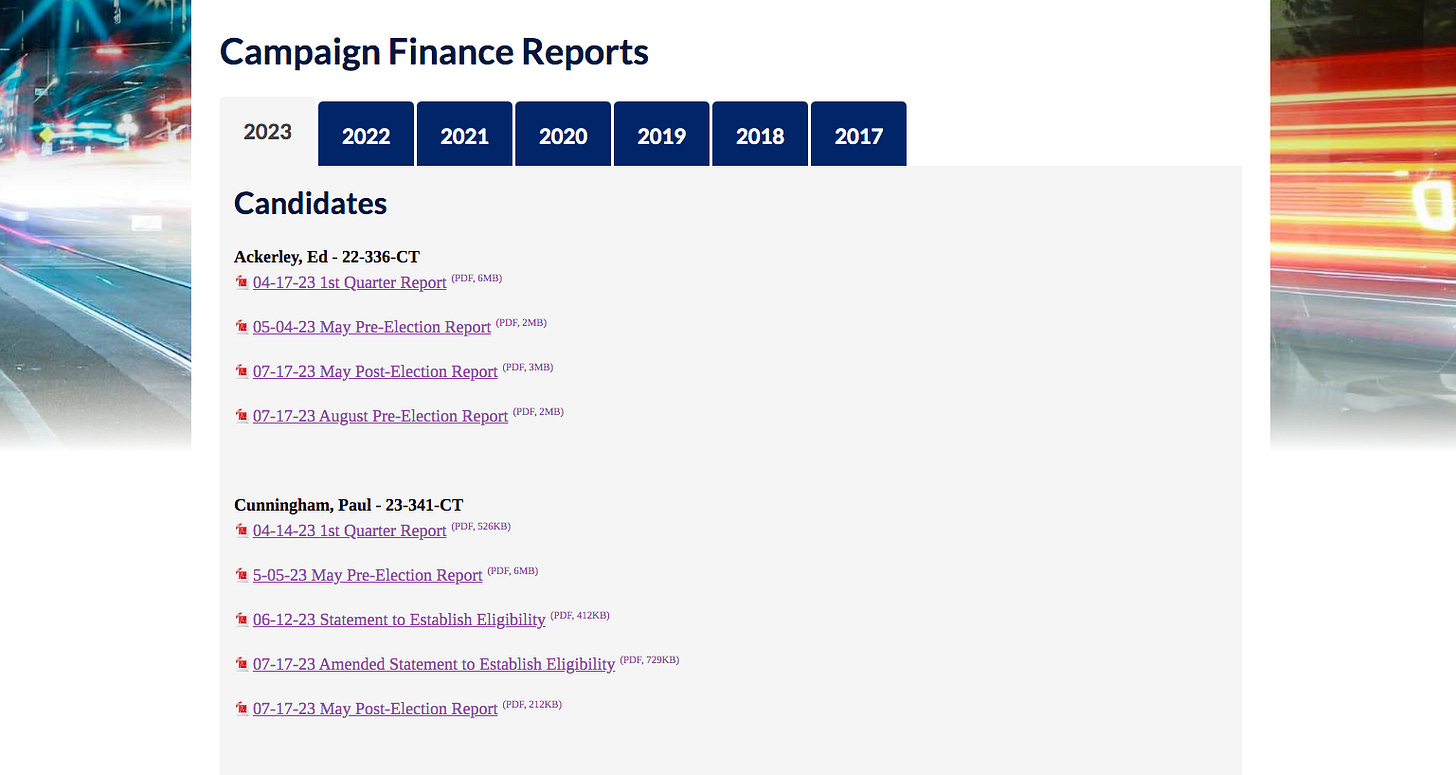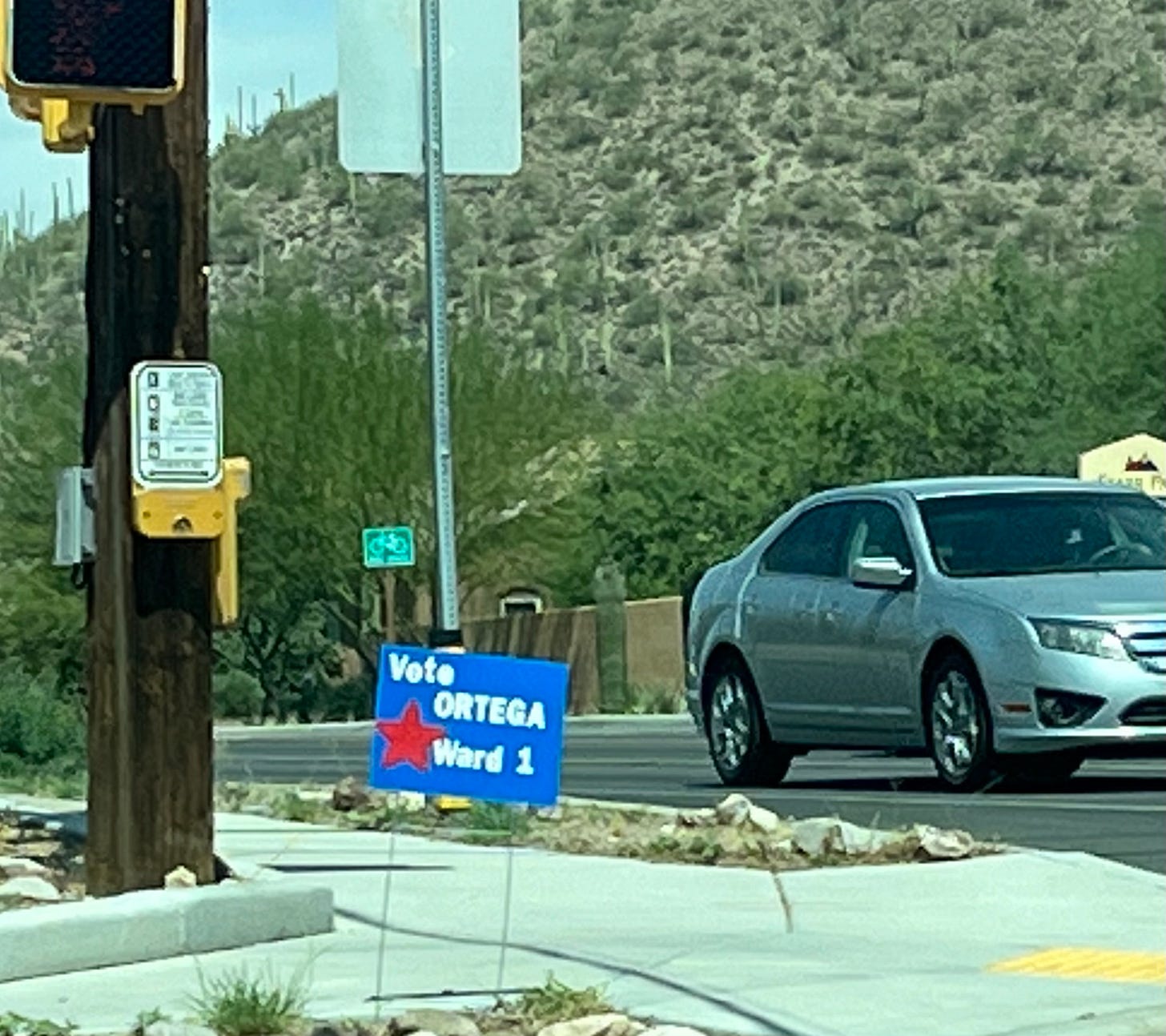The Daily Agenda: The medical examiner sets an example
An ode to data dashboards ... The medical examiner has the right attitude ... Finchem flies the coop.
Every so often, local officials do something that is so plainly useful to the public conversation that it deserves to be highlighted.
The Pima County Office of the Medical Examiner did just that with their data dashboards on deaths. We now have a shared set of up-to-date, essential facts about fentanyl, firearms, the border, law enforcement shootings, and other issues that go to the heart of who we want to be as a community and a country.
The value of data dashboards is they gather a whole bunch of data and present it in a way designed for non-experts to understand. That would be us, the public.
The medical examiner’s office showed a public-minded attitude that officials at every level of government should use as an example. They anticipated which questions the public needed answered, took on the work of finding those answers, and every month they make them available.

Data dashboards can’t tell the whole story, but they move forward the starting point for news reporting and discussions.
They allow us to ask nuanced questions, instead of spending our time rooting around for answers to basic questions or referring to information in the medical examiner’s annual reports that is usually at least six months old.
For example, with fentanyl-related deaths, we can ask: Why are more people over the age of 50 dying from fentanyl now than several years ago? Why do so many deaths involve fentanyl and other drugs, rather than fentanyl by itself? Why does fentanyl get so much more attention than methamphetamine, despite both drugs being involved in roughly the same number of deaths?
Data dashboards save reporters time, help them spot trends, and allow them to write sophisticated stories. Curious citizens and researchers don’t have to rely on records requests or news stories. They can easily find the data themselves.
Officials can’t just spout off ridiculous claims. If they do, they have to answer for why they didn’t take two minutes to check.
The list of agencies and organizations that use data dashboards goes on and on. U.S. Customs and Border Protection’s monthly data is the backbone of the public policy debate over immigration and the border. The Arizona Department of Health Services’ dashboard kept the public aware of the impact of the COVID-19 pandemic. Earlier this week, we used the Solari Crisis and Human Services dashboard to show how crisis hotlines were used in Arizona.
But the list is nowhere near complete.
Take a minute and go to the campaign finance page run by the City Clerk’s Office, which Curt has been plowing through for recent newsletters.
Instead of using the best available tools to illuminate the public, as the medical examiner’s dashboard does, the campaign finance page pushes the work for understanding who is bankrolling candidates onto the shoulders of the public.
It’s not lost on us that the system the city council let stagnate is the one that allows the public to see who gives them money. The same goes for state lawmakers who spent millions of dollars building seethemoney.az.gov and then drove it straight into the mud, where it’s remained mired for the past seven years.
But let’s get back to the medical examiner’s dashboards.
The medical examiner created the first version of its dashboard in September and they’ve kept it in tune with policy discussions, as county officials noted in a July 14 memo to the Pima County Board of Supervisors.
The dashboards “can be adjusted and enhanced in response to ever-changing public health interests and issues,” Francisco Garcia, deputy county administrator and chief medical officer, wrote in the memo.
“Trends detected by our medical death investigations serve as an impactful guide for policy, legal, and public health interventions aimed at improving the lives of people in our communities,” Dr. Gregory Hess, chief medical examiner, wrote.
You can see Tucson’s main policy debates reflected in the data on opioids, motor vehicles, pedestrians, unhoused people, veterans, and firearms, as well as migrants who die while crossing the Arizona-Mexico border, which builds on two decades of work by the medical examiner and the aid group Humane Borders.
The most recent additions, the information about deaths before, during, and after being in law enforcement custody, came after national organizations determined those deaths should be considered a public health issue, Garcia wrote.
The addition is also in-line with Pima County’s creation of a justice data hub, which will centralize information from various criminal justice agencies in a single data warehouse.
When complete, the hub will provide a real-time image of what's happening in Pima County's justice system. It will also help the county meet future requirements of the Arizona Criminal Justice Commission, which has been tasked by the Legislature with creating a statewide justice database.
So, don’t be surprised if you see all sorts of news stories pop up showing nuanced views of these issues.
You could be part of the reason those stories appear. If you think the medical examiner should publish data about different circumstances for deaths, let them know. You can reach them here.
Flying the coop: Former state Rep. Mark Finchem, who served from 2015 through 2022 and won four elections, is no longer registered to vote in Pima County, the Fouth Estate 48’s Dillon Rosenblatt reports. Voter registration documents show that Finchem, who previously lived in Oro Valley, registered to vote in January from a Phoenix address. He’s also filed his intent to challenge Maricopa County Recorder Stephen Richer, a Republican, in the 2024 election. Finchem was the Republican nominee for secretary of state in the 2022 election, but lost the race to Democrat Adrian Fontes — despite never accepting his 120,000-vote loss.
Big money for park in Ward 1: Joaquin Murrieta Park is going to get $13.7 million, Ward 1 Council member Lane Santa Cruz wrote in her newsletter. Much of that money comes from Prop 407, but the National Park Service also recently announced they contribute nearly $1 million for a splash pad. They expect to break ground later this year.
Blocking “hostile” bills: Pima County officials are developing suggestions for bills they’d like to see in the state Legislature, according to the mid-year legislative report the county’s lobbyists sent to the county supervisors. Overall, counties like Pima had a “successful session blocking dozens of hostile measures that would have stripped county authority and revenues,” such as shifting costs for juvenile corrections.
Changing the rules: Pima County supervisors rescinded a policy last week requiring employees to take unpaid leave in order to run for paid public office seats, the Arizona Daily Star’s Nicole Ludden reports. The measure, which passed by a vote of 3-2, has caused concern among several elected officials, including Pima County Assessor Suzanne Droubie and Pima County Superintendent of Schools Dustin Williams, but has been praised by Pima County Sheriff Chris Nanos.
Battle blazes on: A rezoning battle in Rio Rico has taken an interesting turn, as International mining company South32 has denied involvement with the landowner’s proposal, the Nogales International’s Angela Gervasi reports. But a letter written by landowner Andy Jackson to the Santa Cruz County Planning & Zoning Commission suggests otherwise.
“The proposal is for South32, as the initial spark to improve the standard of living in Santa Cruz County … This spawns hundreds of opportunities,” Jackson wrote. “This mine and technology will be the first in the world and people will come from all over the country and the world to see it. Hotels will be built to accommodate them and even prospects for a redeveloped Esplendor can happen.”
Show them the money: The University of Arizona is one of three universities to receive $10 million to address the Southwest’s water shortage, according to the Tucson Sentinel’s Daniel Shailer. Along with the UA, the universities of Southern California and Nevada have established the Consortium for Potable Water reuse as a cooperative research partnership. The UA’s research will focus on how to sustainably treat water for different contaminants until it’s drinkable.
It may not be $10 million but your subscription will go a long way toward helping to solve Arizona’s news shortage. Subscribe now to sustainably grow local journalism!
21: The number of pedestrians who have died so far this year in Pima County. Seventeen of those deaths involved a pedestrian who was not in a crosswalk.










"Number of the day" seems like it'd be a fun little stinger!
Thanks for the tip on the medical examiners data dashboard. It would be awesome to get the same transparency from local government on campaign finance AND on the GPLET/Rio Nuevo tax giveaway deals. Reporters and the people shouldn't have to dig around to find the facts. Wasn't there a plan to fold local elections into the state campaign finance reporting system?